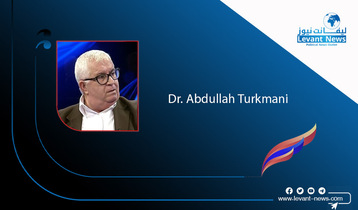-
A Decade of Despair

Next month marks a grim milestone in Syria’s conflict, the recognition that ten years have gone by since the country made a rapid descent into chaos. What was a relatively underreported part of the Middle East suddenly becoming headline news and although 2020 was the least deadly year to date, the complicated patchwork of politics and power continues to make it one of the most dangerous countries on the planet to live in.
Over the last week at least 12 people have been killed and 29 wounded in two car bomb blasts in north-western Syria. In late January the Russian air force launched a salvo of 95 air strikes in 24 hours targeting ISIS in eastern Syria after an ambush killed regime troops. The future of America, Russia, Turkey and Iran’s presence in the country remains deeply uncertain and analysts now tend to agree that the state of the economy represents the single biggest threat to President Assad’s rule.
Millions of Syrians live in a reality of a layered crisis. Beyond the legacy of the conflict to date, whether that led to them losing their lives, loved ones, livelihoods or being forced to flee the country, is the squeeze that Covid is putting on already terrible conditions. Syria’s battered healthcare system has no ability to truly contain a virus that has overwhelmed countries with state-of-the-art facilities. Lockdowns in regional countries that host refugees have exacerbated their conditions further with levels of poverty at record highs.
In the last few days organisers have confirmed the latest edition of the Brussels Conferences aimed at ‘supporting Syria and the Region’. With donor fatigue combined with the economic shock of Covid and the emergence of competing crisis, such as the warnings of famine in the Sahel and the dire conditions facing people in Yemen, Syrian advocates will find it even harder to make their case.
The uncertainty and fragility that defines the status quo makes it hard to ‘bet’ or significantly invest in any outcome that can genuinely provide a vision for a better future for Syrians at large. The debate about large scale reconstruction of the country’s destroyed infrastructure seems to have come and gone and the focus of the Regime and its allies at present is on the punitive impact of sanctions.
It is a challenge to ask the question what Syria will and could look like in 2031. One scenario sees the cracks and fissures that crisscross the country becoming harder and more permanent. Will the quasi-state like entity that the Kurdish-led SDF created in the northeast become the de-facto sovereign power much like the Iraqi Kurdistan region became in the 1990s?
Will Turkey’s more strategic investment in the Northwest see a flourishing borderland economy or will it become a Gaza-like enclave cut off from the wider world. Will the isolation of Damascus endure for the medium term? The Assad Regime has been isolated in the past, no more so than following the assassination of Rafik Hariri in 2005, but the ability of Damascus to project power and influence across the region allowed it to largely emerge unscathed.
There has unsurprisingly not been much talk of Syria’s traditional foreign policy role in the region over the past ten years. It’s ability to leverage proxy allies against Israel for instance has all but vanished and today we witness a ‘phony war’ whereby Israel strikes at Iranian targets at the country at will with little in the way of recourse.
The return of a more conventional US President to the White House who has committed to reengaging with Iran may have reverberations that lead to a reduction on the squeeze in Syria. An important question to the Biden Administration is whether they will put Iran’s presence and role in Syria onto the table in the wider discussions around the nuclear programme, something that former President Obama singularly failed to do.
Meanwhile the fate of the six million plus Syrian refugees remains the most forgotten of all the casualties of the conflict. The upcoming Brussels conference may be able to find a certain percentage of funds that are needed to meet humanitarian needs, but with no evidence that the majority of these refugees want to return home anytime soon it is time for a serious conversation about their future. The continued limbo of Palestinians refugees in the region decades on from their original displacement is an ominous warning of how these issues can be dramatically side-lined from the global agenda.
James Denselow,
You May Also Like
Popular Posts
Caricature
BENEFIT Sponsors BuildHer...
- April 23, 2025
BENEFIT, the Kingdom’s innovator and leading company in Fintech and electronic financial transactions service, has sponsored the BuildHer CityHack 2025 Hackathon, a two-day event spearheaded by the College of Engineering and Technology at the Royal University for Women (RUW).
Aimed at secondary school students, the event brought together a distinguished group of academic professionals and technology experts to mentor and inspire young participants.
More than 100 high school students from across the Kingdom of Bahrain took part in the hackathon, which featured an intensive programme of training workshops and hands-on sessions. These activities were tailored to enhance participants’ critical thinking, collaborative problem-solving, and team-building capabilities, while also encouraging the development of practical and sustainable solutions to contemporary challenges using modern technological tools.
BENEFIT’s Chief Executive Mr. Abdulwahed AlJanahi, commented: “Our support for this educational hackathon reflects our long-term strategic vision to nurture the talents of emerging national youth and empower the next generation of accomplished female leaders in technology. By fostering creativity and innovation, we aim to contribute meaningfully to Bahrain’s comprehensive development goals and align with the aspirations outlined in the Kingdom’s Vision 2030—an ambition in which BENEFIT plays a central role.”
Professor Riyadh Yousif Hamzah, President of the Royal University for Women, commented: “This initiative reflects our commitment to advancing women in STEM fields. We're cultivating a generation of creative, solution-driven female leaders who will drive national development. Our partnership with BENEFIT exemplifies the powerful synergy between academia and private sector in supporting educational innovation.”
Hanan Abdulla Hasan, Senior Manager, PR & Communication at BENEFIT, said: “We are honoured to collaborate with RUW in supporting this remarkable technology-focused event. It highlights our commitment to social responsibility, and our ongoing efforts to enhance the digital and innovation capabilities of young Bahraini women and foster their ability to harness technological tools in the service of a smarter, more sustainable future.”
For his part, Dr. Humam ElAgha, Acting Dean of the College of Engineering and Technology at the University, said: “BuildHer CityHack 2025 embodies our hands-on approach to education. By tackling real-world problems through creative thinking and sustainable solutions, we're preparing women to thrive in the knowledge economy – a cornerstone of the University's vision.”
opinion
Report
ads
Newsletter
Subscribe to our mailing list to get the new updates!




















